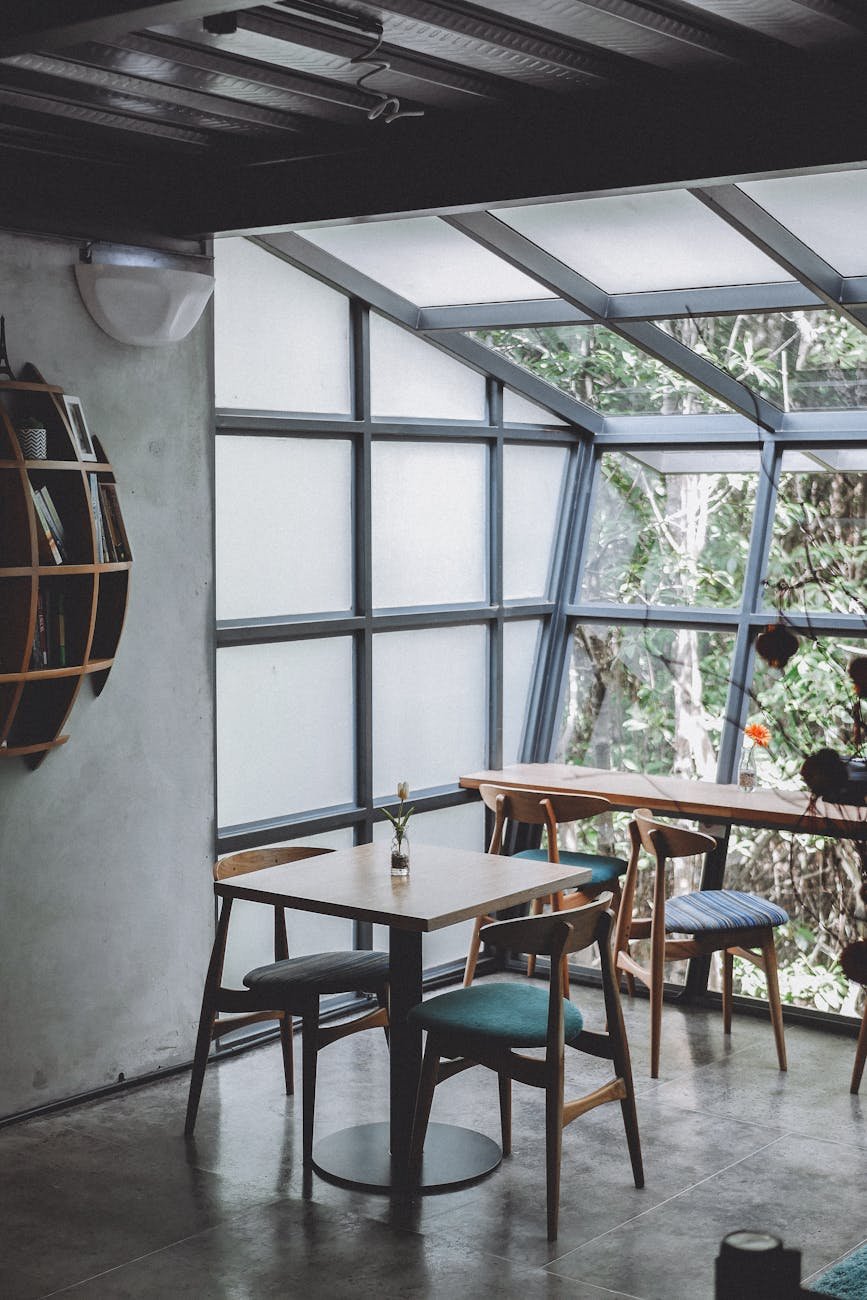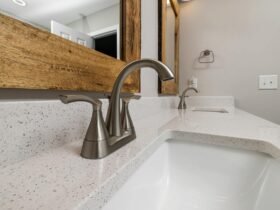Understanding the Importance of an Interior Designer
When it comes to creating your dream space, the role of an interior designer is invaluable. An interior designer is a trained professional who specializes in enhancing the functionality, aesthetics, and overall appeal of your living or working environment. They possess the skills and expertise to transform any space into a harmonious and visually pleasing area that reflects your personal style and meets your specific needs.
Role of an Interior Designer
The role of an interior designer extends far beyond simply choosing colors and furniture. They are responsible for conceptualizing and executing design plans that optimize the functionality and flow of a space. Some key responsibilities include:
-
Space Planning: Interior designers analyze the available space and develop efficient layouts that maximize functionality and optimize the use of every square foot.
-
Material Selection: They carefully select materials, finishes, and furnishings that align with the client’s vision, while considering factors like durability, sustainability, and budget.
-
Lighting Design: Interior designers understand the importance of lighting in creating ambiance and enhancing the overall mood of a space. They strategize and implement lighting solutions that illuminate and accentuate various areas within a room.
-
Color Coordination: By skillfully combining different colors and textures, interior designers create harmonious and visually appealing environments that evoke specific emotions or atmospheres.
-
Project Management: They oversee the entire design process, coordinating with contractors, suppliers, and other professionals to ensure a smooth and successful execution of the project.
Benefits of Hiring an Interior Designer
Hiring an interior designer can bring numerous benefits to your project. Here are some key advantages:
| Benefits |
|---|
| Expertise: Interior designers possess extensive knowledge of design principles, trends, and industry standards. They can provide valuable insights and recommendations based on their experience. |
| Time and Money Savings: With their expertise, interior designers can help you avoid costly mistakes and make informed decisions. They have access to a wide network of suppliers and can negotiate better deals on your behalf. |
| Enhanced Functionality: Interior designers have a keen eye for spatial planning and can optimize the layout of your space to maximize its functionality and flow. |
| Personalized Design: They take the time to understand your preferences, lifestyle, and needs, translating them into a design that reflects your personality and meets your specific requirements. |
| Access to Resources: Interior designers have access to a vast array of resources, including materials, fabrics, and furniture that may not be readily available to the general public. |
| Project Management: Interior designers act as project managers, overseeing every detail of the design process, coordinating with contractors, and ensuring that the project stays on track and within budget. |
By understanding the role of an interior designer and the benefits they bring to the table, you can make an informed decision when it comes to hiring one for your project. Remember to consider factors such as interior designer cost and their specialization, whether it’s commercial, luxury, or residential design. With their expertise, you can unlock the full potential of your space and bring your dream vision to life.
Finding the Right Interior Designer Near You
When it comes to transforming your living or working space, finding the right interior designer is essential. They have the expertise and creativity to bring your vision to life. To ensure a successful collaboration, it’s important to research local interior designers and consider various factors before making your decision.
Researching Local Interior Designers
Start by researching local interior designers in your area. A simple online search or asking for recommendations from friends, family, or colleagues can provide you with a list of potential designers to consider. Additionally, you can explore online directories or platforms that specialize in connecting clients with interior designers.
Take the time to review their portfolios and websites. This will give you a sense of their style, aesthetics, and previous projects. Look for designers whose work aligns with your vision and desired outcome. You may also want to read reviews or testimonials from their past clients to gauge their level of satisfaction. This research will help you narrow down your options and make an informed decision.
Factors to Consider When Choosing an Interior Designer
As you evaluate different interior designers, consider the following factors to help you make the best choice for your project:
-
Experience and Specialization: Look for interior designers with ample experience in the type of project you have in mind. Some designers specialize in residential interiors, while others focus on commercial or luxury spaces. Choose a designer whose expertise aligns with your project requirements. You can find more information on different types of interior designers in our articles on commercial interior designer and residential interior designer.
-
Style and Aesthetics: Every designer has their own unique style and design approach. Consider their portfolio and assess whether their design aesthetic matches your vision and preferences. It’s crucial to find an interior designer who can bring your dream space to life while staying true to your personal style.
-
Budget and Pricing: Interior design projects can vary significantly in terms of budget and pricing. It’s important to have a clear understanding of your budget and discuss it with potential designers. They can provide you with an estimate of the overall cost and help you prioritize your design goals. You can find more information on the cost of hiring an interior designer in our article on interior designer cost.
-
Communication and Collaboration: Effective communication and collaboration are vital for a successful partnership with your interior designer. During the initial consultation, assess their ability to listen, understand your requirements, and communicate their ideas. A good working relationship is essential to ensure your vision is translated into a well-executed design.
By thoroughly researching local interior designers and considering these factors, you’ll be able to find the right professional for your project. Remember, it’s important to choose an interior designer who not only possesses the necessary skills and expertise but also understands and shares your vision for your dream space.
Working with Your Interior Designer
Once you have found the right interior designer near you, it’s time to embark on a collaborative journey to bring your dream space to life. Working closely with your interior designer is essential to ensure that your vision is understood and translated into a beautiful and functional design. This section will cover the initial consultation and vision-setting process, as well as the importance of collaboration and communication throughout the project.
Initial Consultation and Vision
The initial consultation with your interior designer serves as the foundation for the entire project. During this meeting, you will have the opportunity to discuss your ideas, preferences, and goals for the space. It’s important to be open and transparent about your budget and timeline to ensure that expectations are aligned from the start.
Your interior designer will ask you questions to gain a deeper understanding of your style, lifestyle, and functional requirements. They will also provide their professional insights and suggestions based on their expertise and knowledge of design principles. Together, you will work on establishing a clear vision for the project, taking into consideration factors such as the purpose of the space, desired ambiance, and any specific design elements you wish to incorporate.
During this phase, it can be helpful to gather inspiration from various sources such as magazines, websites, or social media platforms. Sharing these visual references with your designer can help them better grasp your aesthetic preferences and guide the design process.
Collaboration and Communication
Effective collaboration and communication are key to a successful interior design project. Throughout the process, it’s important to maintain open lines of communication with your interior designer. Regular check-ins, either in person, via phone, or email, will allow you to stay updated on the progress and address any concerns or questions that may arise.
Your interior designer will collaborate with you on various aspects of the project, including space planning, material selection, and furniture arrangement. They will present design concepts and proposals for your review and approval, taking your feedback into account to refine the design until it aligns with your vision. Remember, this is a collaborative process, and your input is invaluable in shaping the final outcome.
Additionally, your interior designer may work closely with contractors, architects, or suppliers as needed. They will coordinate and oversee the execution of the design plan, ensuring that all elements come together seamlessly. Regular site visits and inspections may be conducted to monitor progress and ensure that the project is on track.
By fostering a strong collaborative relationship and maintaining open communication, you can work hand-in-hand with your interior designer to bring your dream space to life. The end result will be a harmonious and functional design that reflects your personal style and meets your needs. For more information on the cost of hiring an interior designer, check out our article on interior designer cost.
Bringing Your Dream Space to Life
Once you’ve gone through the process of selecting the right interior designer and finalizing the design plan, it’s time to bring your dream space to life. This stage involves the execution of the design plan, followed by the transformation and final touches that will truly make your space shine.
Execution of the Design Plan
The execution of the design plan is the phase where your interior designer puts their expertise and creativity to work. They will oversee the implementation of the design elements, ensuring that the vision for your space is brought to reality. This stage involves several important steps:
-
Sourcing and Procurement: Your interior designer will begin sourcing and procuring the necessary materials, furniture, fixtures, and accessories for your project. They will leverage their industry connections and knowledge to find the best options that align with your design goals and budget.
-
Coordination with Contractors: If any construction or renovation work is required, your interior designer will collaborate with contractors, architects, and tradespeople to ensure that the project runs smoothly. They will oversee the construction process, making sure that the design plan is implemented correctly and adheres to all necessary building codes and regulations.
-
Timelines and Budget Management: Your interior designer will also manage the project timelines and budget. They will ensure that the work progresses according to the agreed-upon schedule and that any unforeseen issues are addressed promptly. By closely monitoring the budget, they will help you stay on track and avoid any unnecessary expenses. If you’re curious about the typical cost of hiring an interior designer, check out our article on interior designer cost.
Transformation and Final Touches
As the execution of the design plan nears completion, your space will start to undergo a remarkable transformation. This is when the magic happens, turning your vision into a reality. Your interior designer will focus on the final touches that bring the design together and infuse your space with personality and style. Some key elements of this stage include:
-
Furniture Placement and Styling: Your interior designer will carefully arrange the furniture and accessories according to the design plan. They will consider factors such as functionality, flow, and visual appeal. By strategically placing each item, they will create a harmonious and inviting environment.
-
Lighting and Décor: Lighting plays a crucial role in setting the ambiance of a space. Your interior designer will select and position lighting fixtures to enhance the overall design aesthetic and create the desired mood. Additionally, they will add decorative elements such as artwork, rugs, curtains, and decorative accents to add the finishing touches.
-
Final Walkthrough and Client Satisfaction: Once the transformation is complete, your interior designer will conduct a final walkthrough with you. This is an opportunity for you to see the completed project and provide feedback. Your designer will address any concerns or adjustments that may be needed to ensure your satisfaction.
By focusing on the execution of the design plan and paying attention to the transformation and final touches, your interior designer will bring your dream space to life. The result will be a beautifully designed and functional space that reflects your unique style and meets your needs. Whether you’re seeking a commercial or residential interior designer, the expertise and guidance provided throughout the process will make your interior design journey a rewarding one.













Got a Questions?
Find us on Socials or Contact us and we’ll get back to you as soon as possible.